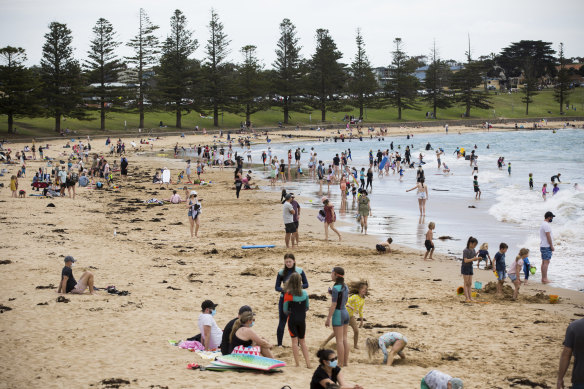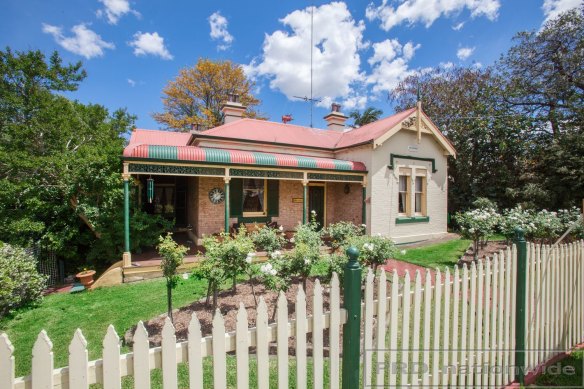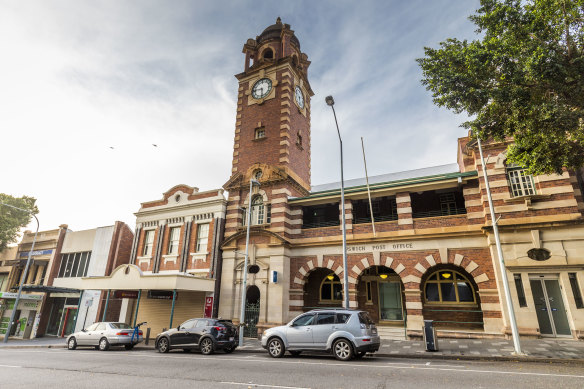This was published 2 years ago
How much it costs to live in fastest-growing tree-change hotspots
Housing prices have soared in Australia’s fastest-growing regional areas, where even a rollout of new home builds has not been enough to meet demand.
Although the tree-change trend has eased somewhat compared to the days of lockdown, a widespread acceptance of remote working for part of the week continues to spur demand for lifestyle locations.

Surf Coast house prices have soared. Credit: iStock
Official figures last week laid bare the exodus from major cities since the pandemic hit, as would-be residents search for more spacious and affordable homes and a more relaxed lifestyle.
Melbourne lost 60,505 residents in the year to June 2021, and Sydney lost 5151, Australian Bureau of Statistics data showed.
Several regional areas within extended commuting distance of the capitals recorded a growing population, such as Victoria’s Surf Coast — up 4.4 per cent — or Maitland in the NSW Hunter region, up 3.5 per cent.
Buyers who have kept their city jobs or sold city homes have been able to splash cash on regional residences.

Torquay’s lifestyle has been drawing sea-changers.Credit: Paul Jeffers
In the Surf Coast Shire, which had the highest population growth of any Victorian council area, house prices boomed 43 per cent last year to a median $1.4 million, Domain data shows.
McCartney Real Estate director Tim Carson said the area had been fielding demand from pandemic sea-changers from Melbourne, freed from commitments to their CBD offices or kids’ weekend sport, as well as farmers in regional Victoria buoyed by improved agricultural conditions and perhaps looking for a weekender.
“A lot of people had money to buy their holiday home,” he said.
“When COVID-19 happened, there was no better time for someone to move down.”
He highlights infrastructure such as sought-after schools, beaches and amenities such as golf courses or bike tracks.
Despite many recent land releases for new homes, strong demand means the property market is “extremely buoyant”.
A four-bedroom house in Torquay would cost at least $1.2 million, while a lifestyle property on an acre or so could cost $2 million-plus, he said.
“It is a great place to live, and hopefully more people will continue to come down,” he said.
In NSW, Maitland had the fastest population growth outside of Sydney. House prices in the council area jumped 22.8 per cent last year to a relatively affordable median price of $660,000.

Maitland has been attracting out-of-area buyers.Credit: PRD Nationwide Hunter Valley
Prices for some pockets have risen as much as 30 per cent, PRD Hunter Valley principal Rhonda Nyquist said.
“Maitland real estate has been undervalued for a long time but I think people are realising we have got all the facilities here,” she said, citing its location close to Newcastle and Newcastle airport, train links, Hunter Valley vineyards and old-style pubs among other amenities.
Mr Nyquist has seen an increasing number of out-of-area buyers, including some from Sydney who bought sight-unseen during lockdown.
Despite a rise in new developments and an improving amount of stock for sale, prices are up. For a four-bedroom, two-bathroom home with a double garage in Maitland centre, buyers could expect to pay from $650,000 to $800,000, although in cheaper nearby pockets, there might be some below $600,000, she said.
In Queensland, less affected by lockdowns, Ipswich was the fastest growing regional area with 3 per cent population growth.
House prices in the Ipswich statistical area are rising, but at a more moderate pace — up 5.6 per cent over the past year to a median $475,000.
It’s home to Australia’s largest masterplanned community, known as Greater Springfield, a project of AFR Rich Lister property developer Maha Sinnathamby.

Ipswich’s median house price is a third of inner Brisbane’s median.Credit: Glenn Hunt
Ray White Ipswich principal Warren Ramsey said some pockets were up as much as 20 to 30 per cent, but from a more affordable base as people realised they could commute between Ipswich and Brisbane and live in a home that costs a third of the price. Inner Brisbane has a median house price of $1.48 million.
“We are by no means ridiculous [in price]; the value is still here and that is what is attracting people,” he said.
In Tasmania, the fastest growing area outside Hobart was the Break O’Day council area in the state’s north-east, which includes holiday spot St Helens, with 2.6 per cent population growth. Break O’Day house prices rose 34.8 per cent last year to a median $447,500.
In Western Australia, the highest regional population growth (excluding the tiny outback town of Cue, which added four residents for a total of 144) was the shire of Augusta Margaret River. The wine region recorded 2.6 per cent population growth, alongside a 19.8 per cent increase in house prices to a median $587,000.
In South Australia, Mount Barker in the Adelaide Hills had the highest population growth of 3.3 per cent, and house prices rose 14.4 per cent to a median $515,000. In the Northern Territory, the shire of Wagait recorded 1.7 per cent population growth last year.